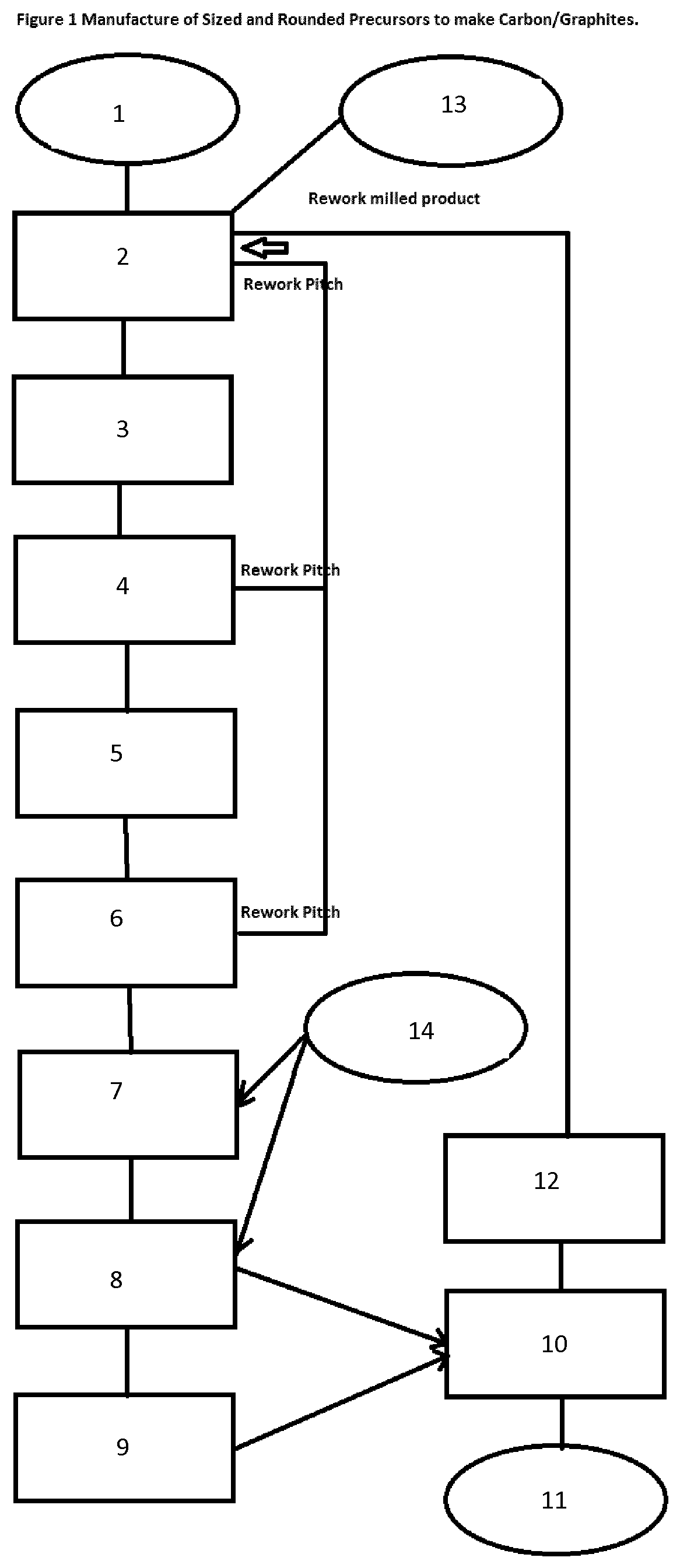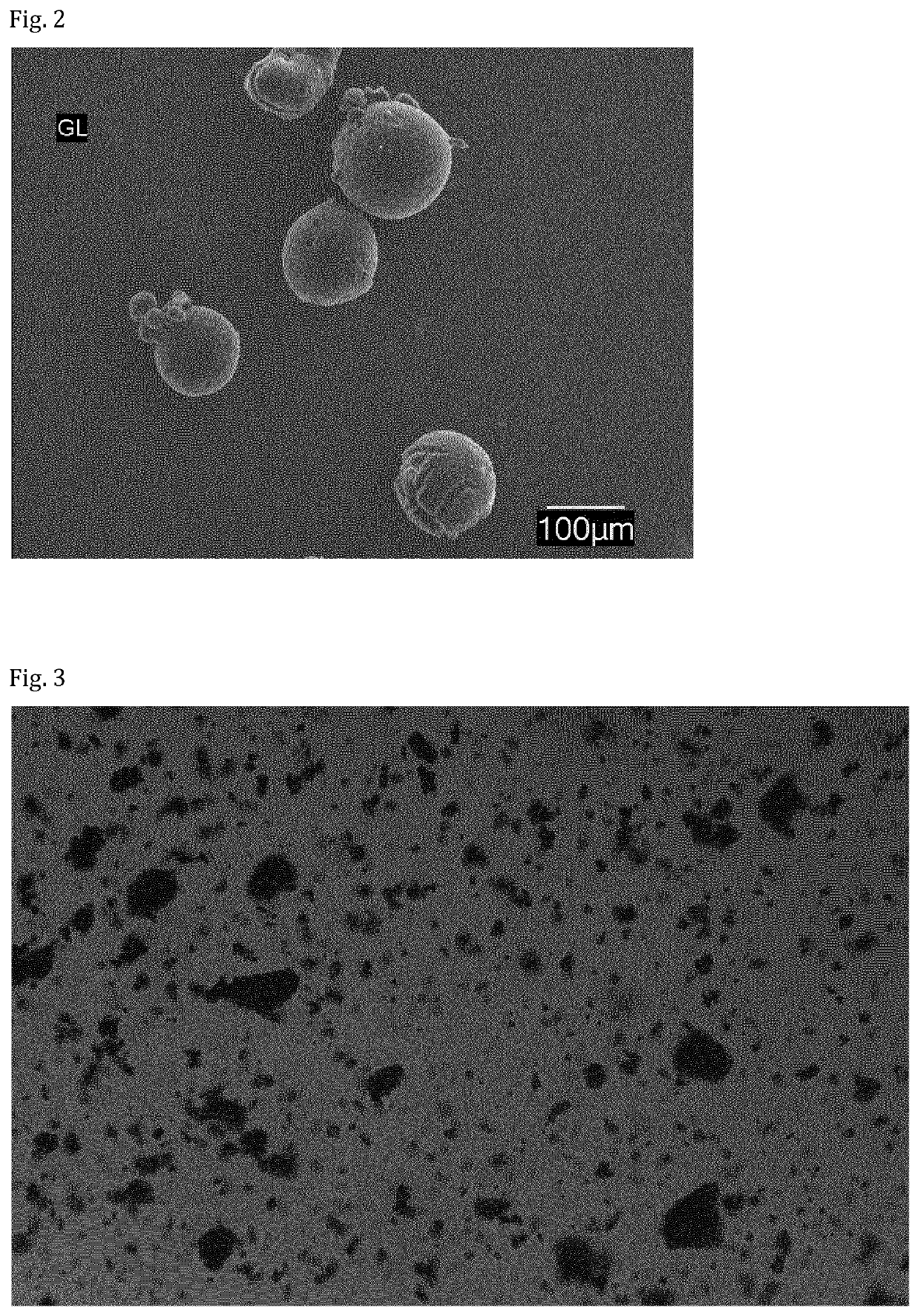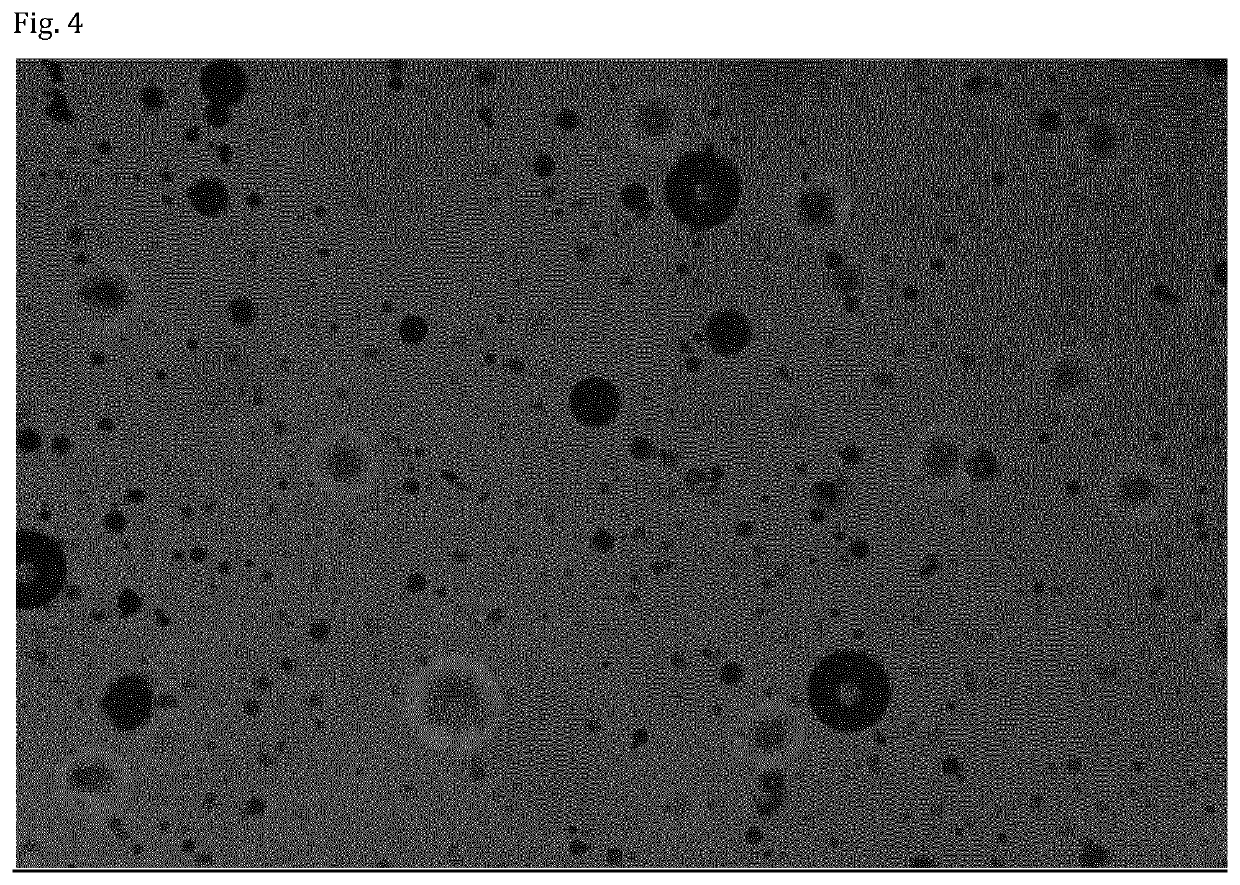Carbon Powders And Methods Of Making Same
- Summary
- Abstract
- Description
- Claims
- Application Information
AI Technical Summary
Benefits of technology
Problems solved by technology
Method used
Image
Examples
example 1
Glycerol Sphericalization
[0101]In this example, 110° C. softening point coal pitch particles that were pre-sized between 400 and 500 mesh were heated in glycerol to between 50° C. and 60° C. while being agitated at 300 RPM using a stirrer. No sphericalization was found when the product reached 50° C. See FIG. 3.
[0102]At 60° C., the particles were well sphericalized and the rounding was quenched by adding 50% glycerol at 20° C. [See FIG. 4].
[0103]The bulk of particles produced were also between 400 and 500 mesh. However, some small particles as well as a few larger agglomerated particles were then removed by sieving to provide a sized powder of rounded carbon precursor.
[0104]It is critical that enough agitation be used to prevent the particles from agglomerating, but the degree of agitation required will vary from material to material.
[0105]This product was strained through a 200 mesh screen and then washed with water. The product was then stabilized using concentrated nitric acid di...
example 2
[0106]110° C. mp pitch (1% pitch (200-300 mesh) in glycerol) was agitated at 300 RPM using a stirrer. We did not find any sphericalization at 80° C. The sphericalization started at 100° C. and the reaction was quenched by adding 50% glycerol that was at 20° C. to harden the particles. (This reaction is time and temperature dependent since we could sphericalize the product at 80° C. by holding the temperature for 10 minutes.) This product was strained through a 200 mesh screen and then washed with water. The product was then stabilized using concentrated nitric acid diluted to 50%. The product was kept at room temperature overnight in the nitric acid. The next day, the temperature was raised 30° C. / hr. with stirring till it reached boiling and kept at boiling for 10 minutes. The product was strained, washed with water, and dried at 120° C. for 3 hrs. To air oxidize the material further, the material was air oxidized at 170° C. for 40 hr. The product was put into a saggar and heated a...
example 3
[0107]A 240° C. mp pitch (1% pitch (100-200 mesh) in glycerol) was agitated at 300 RPM using a stirrer. No sphericalization was noted at 80° C. and was assessed after each 5° C. temperature rise microscopically up to 210° C.. The sphericalization started at 220° C. and the reaction was quenched by adding 50% glycerol that was at 20° C. to harden the particles. (This reaction is time and temperature dependent since we could sphericalize the product at 80° C. by holding the temperature for 10 minutes.) This product was strained through a 200 mesh screen and then washed with water. The product was then stabilized using concentrated nitric acid diluted to 35%. The product was kept at room temperature overnight in the nitric acid. The next day, the temperature was raised 30° C. / hr. with stirring till it reached boiling and kept at boiling for 10 minutes. The product was strained, washed with water, and dried at 120 C. for 3 hrs. To air oxidize the material further, we air oxidized the ma...
PUM
 Login to View More
Login to View More Abstract
Description
Claims
Application Information
 Login to View More
Login to View More - R&D
- Intellectual Property
- Life Sciences
- Materials
- Tech Scout
- Unparalleled Data Quality
- Higher Quality Content
- 60% Fewer Hallucinations
Browse by: Latest US Patents, China's latest patents, Technical Efficacy Thesaurus, Application Domain, Technology Topic, Popular Technical Reports.
© 2025 PatSnap. All rights reserved.Legal|Privacy policy|Modern Slavery Act Transparency Statement|Sitemap|About US| Contact US: help@patsnap.com



